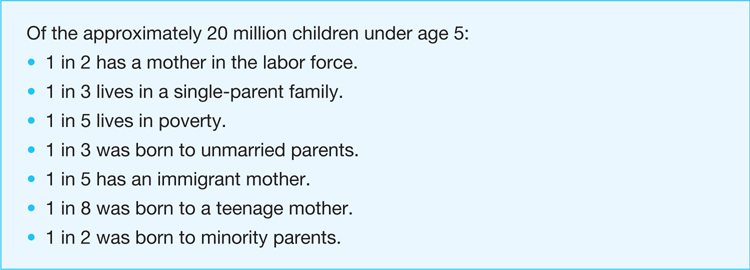Fostering Language Development
“Language development is among the most important tasks of the first five years of a child’s life” (Language Development, n.d.). In fact, language acquisition is a key component to learning across each domain of development. As early childhood educators, we are charged with the important task of not only fostering language development, but also of monitoring children’s progress, planning appropriate supports, and making accommodations when necessary. With the complexity of language acquisition and our varied roles within this system, it is imperative that we plan for, and acquire strategies to effectively promote language development in our students. As more and more children are diagnosed each year with speech delays and our population of English Language Learners is growing, we must come to our educational settings ready to confront this important domain of development. For this discussion you will choose a specific age-range (0-2, 3-5, 6-8), as well as which area of language development you would like to research and plan for. Choose from the options below:
- Children with speech delays
- English Language Learner (ELL)
Initial Post: Once you have decided upon the specific area of language for your focus, you will create a fact sheet to be used within your education setting. To create your fact sheet you will need to do the following:
- Locate one recent (within five years) scholarly article with research-based strategies for fostering language development in an early childhood classroom.
- Using both the article and your textbook, you will create a fact sheet that can be used as a guide in a classroom or school. Your fact sheet should be no more than two pages in length and should include the following:
- The language milestones for the age range you chose (Table 2.1 from your course text).
- The characteristics of and influences surrounding the area of language you chose (i.e. culture, socio-economic influences, prevalence, etc.).
- Explain at least four current, research-based strategies that can be used within a classroom setting. You are required to support each of your strategies from your chosen research articles.
- Explain at least two current, research-based strategies for supporting families with children with these language concerns. You are required to support each of your strategies from your chosen research article and textbook.
- Enhance the visual appeal of your fact sheet by including a minimum of three related images. As a suggestion, you can also include a page border, creative header, etc.
- You will create your fact sheet in Word, Publisher or any other acceptable format, and then save it as a PDF for submission.
Information as needed:
2.2 Understanding Families
Teachers in the United States work with a wide range of families. In order to communicate effectively with families, it is important to have anunderstanding of what family means to the children we serve.
Family Diversity
Just as each child is unique, so, too, is each family, with its own dynamics, psychology, and ways of being (R. M. Barrera, 2001; Mendoza etal., 2003). Our job is to understand the child’s family culture and to support it as best we can. When we meet with families for the first time,it is important to ask questions as well as offer information. By asking for input, we convey to families that their experiences are valued andan essential part of their child’s education. In this way, teachers and families can work together as a team to provide the best possibleenvironment for the child.
Teachers must find out what each child’s family situation is from the start. Gone are the days when the typical family consisted of abreadwinning father who was married to a stay-at-home, child-rearing mother: Only 13% of all families in the United States fit that model,and three out of five preschoolers have their mother in the labor force (Cohany & Sok, 2007; NACCRRA, 2011; U.S. Census Bureau, 2011c).Families in the United States reflect the same diversity that is seen throughout our society. It behooves early childhood professionals toapproach children’s families with an open mind and an open heart, with no preconceived notions about what a proper family should be.
As Figure2.1 shows, teachers should be prepared to work with children who live in all sorts of family situations. Children today often comefrom non-traditional families that can be headed by a single parent, a grandparent, or a teenager. Many children have lesbian, gay,transgendered, or same-sex parents. Of the 646,464 same-sex couples counted in the 2010 census, one-fourth are raising children underthe age of 18 (Gates & Cooke, 2011; James, 2011; U.S. Census Bureau, 2011b). To be effective with all the children in our care, we mustwelcome each family with openness and respect, even if the family’s structure is different from our own.
Figure2.1 Key facts about American families and children today

Sources: American Community Survey 2006–2010, 5-Year Estimates, 2011a, Washington, DC: U.S. Census Bureau; The State of America’sChildren Yearbook, 2004, 2010, Washington, DC: Children’s Defense Fund; United States Census 2010, 2011a, Washington, DC: U.S. CensusBureau; Who’s Minding the Kids? Child Care Arrangements Spring 2010, 2011b, Washington, DC: U.S. Census Bureau.




